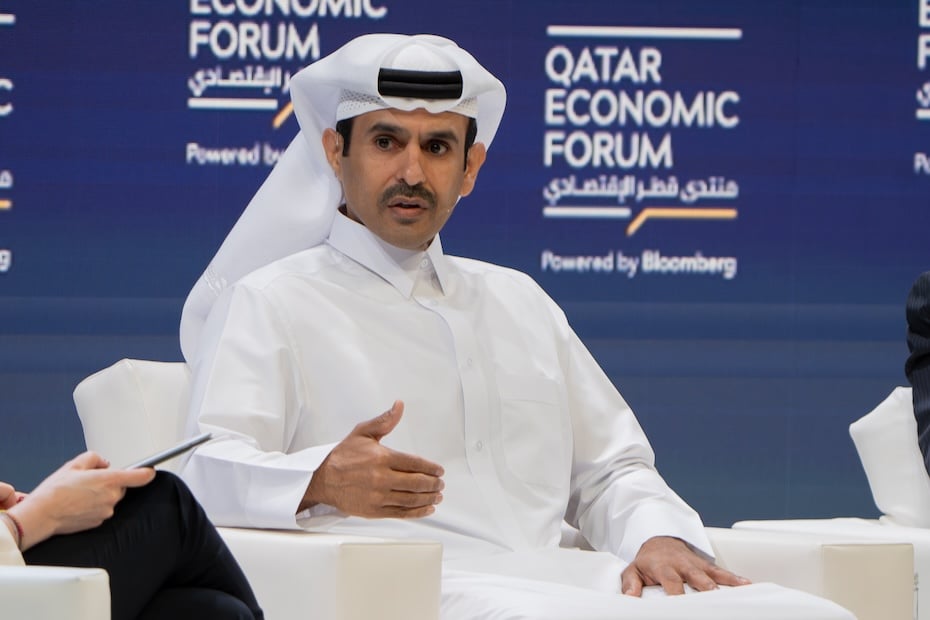Qatar is poised to become a dominant force not only in liquefied natural gas (LNG) production but also in global LNG trading, with plans to trade up to 40 million tons of non-Qatari LNG annually by 2030, a bold new target that underscores the Gulf nation’s ambitions to consolidate its leadership in the global energy market.
Speaking at the 2025 Qatar Economic Forum in Doha, Qatar’s Minister of Energy and CEO of QatarEnergy, Saad Sherida Al-Kaabi, outlined the country’s strategic push to expand its trading operations. He emphasized that the move complements Qatar’s substantial ramp-up in domestic LNG production, which is already on track to more than double before the end of the decade.
“The ambition is by 2030 to reach somewhere in the range of 30–40 million tons of non-Qatari LNG traded by our trading group,” said Al-Kaabi, referencing the company’s rapidly growing trading arm.
Currently, QatarEnergy’s trading division handles approximately 10 million tons of physical LNG annually, more than half of which is sourced from outside Qatar. The expansion signals a broader shift in the company’s commercial strategy, moving from a predominantly production-based model to one that is increasingly agile, flexible, and globally integrated.
Al-Kaabi revealed that the decision to build an in-house trading division was spurred by QatarEnergy’s recognition of missed value in third-party trades involving Qatari cargoes.
“What we saw is that there was money left on the table,” he said. “We have the capability and can actually establish a trading organisation, and we did.”
Alongside the trading growth, Qatar is simultaneously undertaking one of the most significant LNG production expansions in the world. Domestic output, currently standing at 77 million tons per year, is expected to soar to 160 million tons annually by 2030, driven primarily by developments in the North Field East and Golden Pass projects.
The Golden Pass LNG terminal in Texas, where QatarEnergy holds a majority stake, is approaching the start of operations, while production from the North Field East mega-development in Qatar is slated to begin by mid-2026.
To support this global footprint, Qatar is significantly expanding its shipping capabilities, with plans to add 128 new LNG carriers to its already extensive fleet of 70 vessels. This enhanced logistical capacity positions QatarEnergy to meet rising global demand with increased speed and flexibility.
Historically known for its preference for long-term supply contracts, Qatar is now adapting to the evolving LNG market by embracing short-term and spot trading options. This change reflects broader shifts in global energy dynamics, as buyers seek more flexible arrangements to respond to fluctuating market conditions.

This strategy also aligns with Qatar’s goal of becoming a central LNG trading hub, offering reliable, diversified, and rapid-response supply options to a growing list of global partners.
Demand for LNG continues to climb, particularly in Europe, which is recalibrating its energy mix in the wake of reduced Russian gas imports, and in Asia, where fast-growing economies such as China and India are driving up consumption.
Al-Kaabi remains bullish about long-term demand, dismissing concerns about potential supply surpluses.
“The need for electricity and power is huge,” he said, citing population growth and the energy needs of emerging technologies like artificial intelligence as major drivers of future demand.
QatarEnergy is currently in advanced talks with multiple international buyers, including entities in China, India, and other fast-growing economies, to secure new long-term supply agreements.
“You always have sticking points with all negotiations,” Al-Kaabi acknowledged. “Everybody wants a better price deal from both sides.”
While the timeline for some LNG supply projects has seen adjustments, such as the North Field East project’s revised launch from 2023 to mid-2026, Qatar remains steadfast in its mission to lead the energy transition on its own terms. Al-Kaabi emphasised that the country’s investments in infrastructure, fleet capacity, and trading platforms are part of a long-term strategy to maintain its position at the forefront of the global LNG landscape.
As the world continues to navigate a complex energy transition, Qatar’s dual-pronged approach, combining increased production with advanced trading capabilities, positions the country as a resilient and adaptable leader in the future of global energy.



